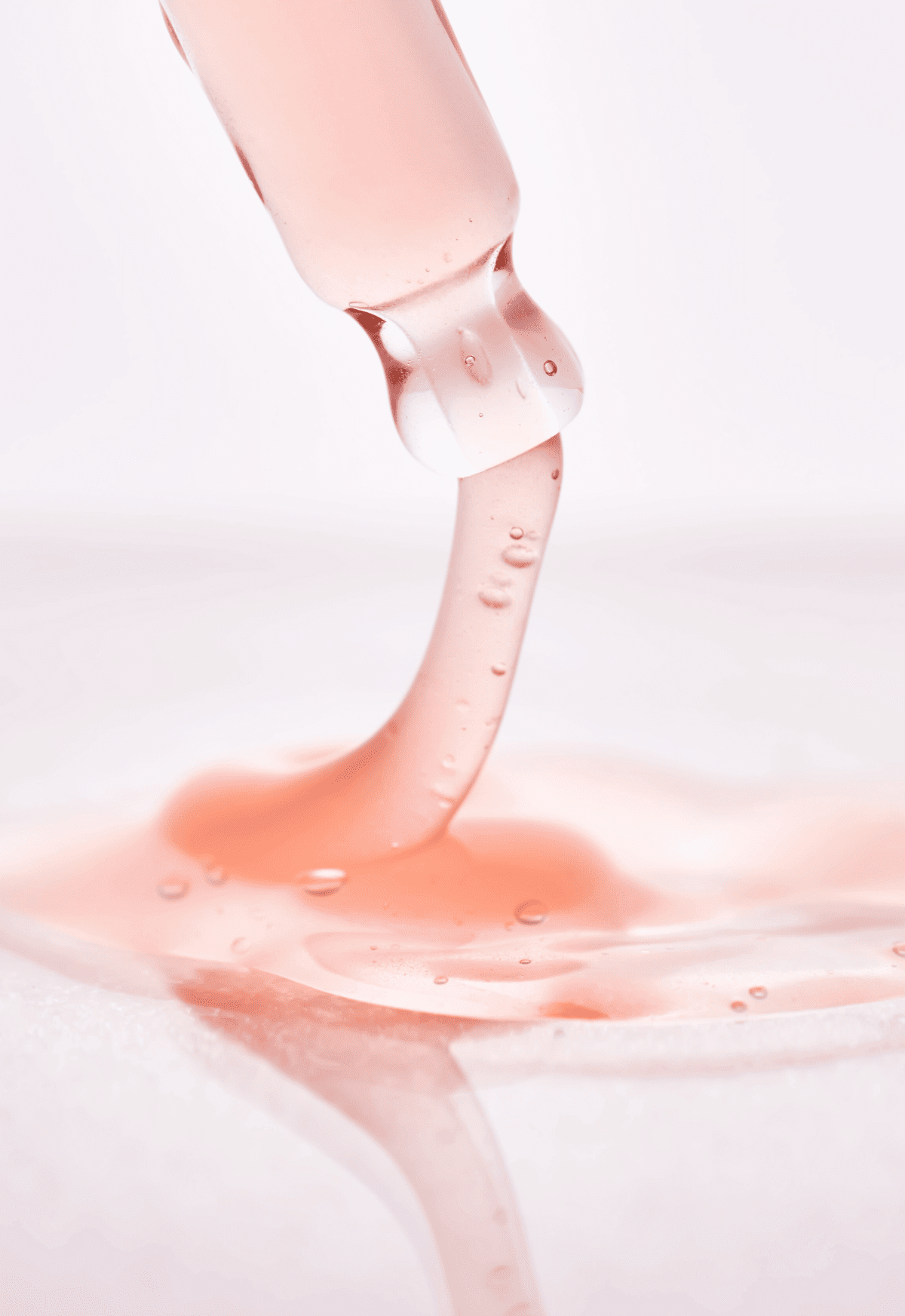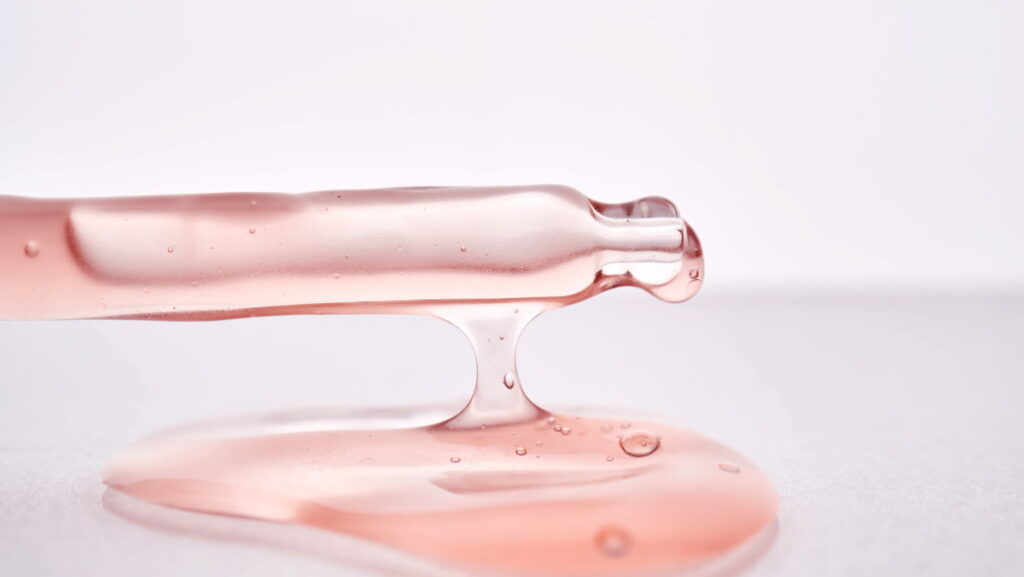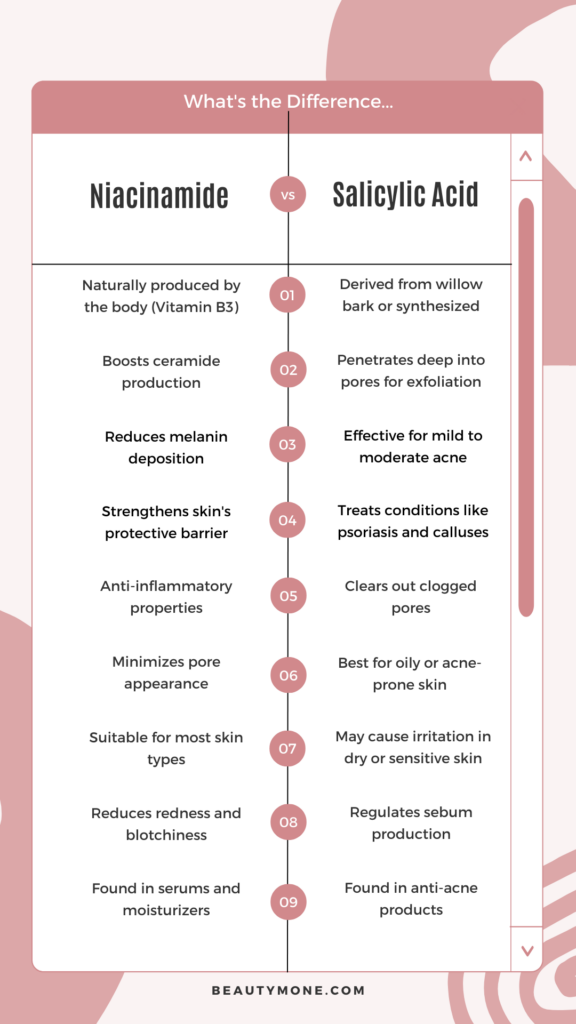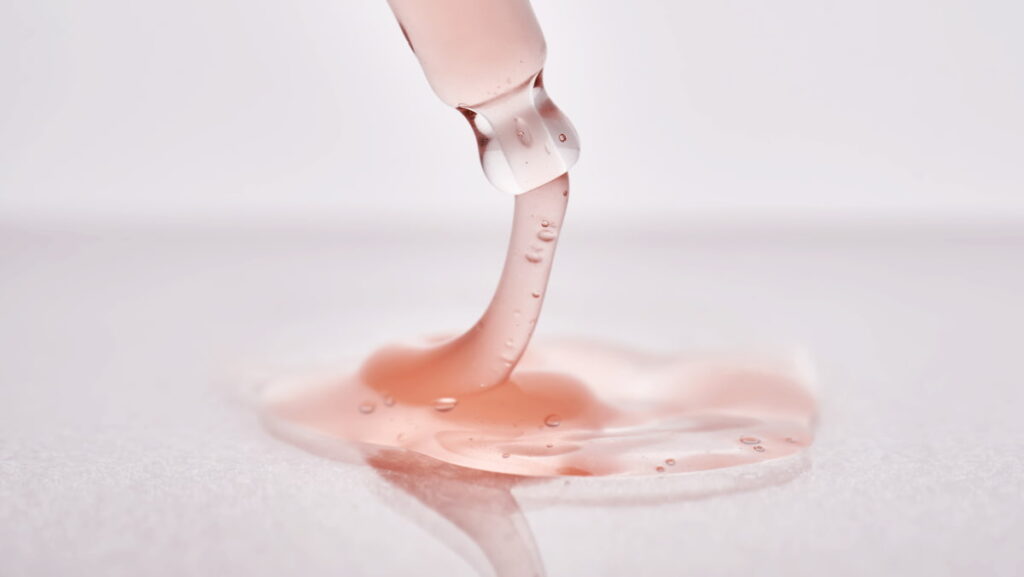
Salicylic acid and niacinamide are two beloved skincare superheroes. These two active ingredients have been making waves in the beauty industry and for a good reason.
You have probably used them separately, but can you use them together? The answer is yes, but you gotta know how to combine them! When combined, they create a powerhouse duo that can transform your complexion.
Layering active ingredients seems like a tricky puzzle to crack. But it doesn’t have to be this way!
In this article, we’ll explore the properties, benefits, and potential side effects of salicylic acid and niacinamide. I will also reveal my comprehensive guide on safely using them together.
Key Takeaways
Can I Use Salicylic Acid And Niacinamide Together?
Absolutely! Salicylic acid and niacinamide can be a winning combination for your skincare routine. In fact, they complement each other’s benefits, making them a dynamic duo for clear and radiant skin.
If you rely solely on salicylic acid, you might miss out on niacinamide’s beneficial support to strengthen your skin’s barrier.
Salicylic acid, being a chemical exfoliant, can sometimes leave your skin feeling drier, especially when starting the treatment. However, it is still less irritating than glycolic acid due to its higher molecular weight.
By incorporating niacinamide into your routine, you can counteract potential side effects from the acid. Niacinamide enhances your skin’s moisture retention, supports barrier function, and helps reduce redness.
On the other hand, if you only use niacinamide, you may not experience the deep-cleansing effect that salicylic acid offers to your pores.
While niacinamide has shown positive results in addressing mild to moderate acne by reducing oil production, it plays a supportive role rather than directly removing dead skin cells or unclogging sebum.
Introducing salicylic acid into your routine will contribute more to clearing existing breakouts and preventing future acne.
As you may have noticed, there are overlapping benefits between these two ingredients. They control excess oil, improve skin texture, minimize pores, and fade discolorations. However, they work through different pathways.
By incorporating both salicylic acid and niacinamide, you can target these skin concerns in two different ways, maximizing the potential for the best results possible.
Why Do Salicylic Acid And Niacinamide Work Well Together?
Salicylic acid and niacinamide work synergistically to address different aspects of skincare concerns. While salicylic acid focuses on exfoliation, unclogging pores, and regulating sebum production, niacinamide contributes to hydration, redness reduction, and overall skin health.
Together, they can provide comprehensive treatment for acne, uneven skin texture, and other imperfections.
Can Salicylic Acid And Niacinamide Be Used Together?
Concocting different active ingredients on your skin can prove risky and lead to unwanted skin irritation. That is why there is an optimal way to combine salicylic acid and niacinamide, avoiding adverse effects and reaping all the skin-loving benefits.
When incorporating salicylic acid and niacinamide into your skincare routine, there are several things you should consider:
pH levels
Our skin’s optimal pH levels (a.k.a. where our skin feels the most comfortable) are between 4.5 and 5.5. Salicylic acid (BHA) has an acid pH level of 2.5-4, while niacinamide lies higher on the pH scale, around 4.5-7.
Now, products with lower pH levels tend to absorb better into our skin. That is why we should apply them first and then follow with the higher pH ones. In other words, salicylic acid should go before niacinamide in your skincare routine.
Water Or Oil Solubility
Here is another reason why salicylic acid comes first in your routine. Salicylic acid, our beloved BHA, is oil soluble, while niacinamide is water soluble. This means salicylic acid is best for penetrating deep into our skin and doing its magic there.
On the other hand, niacinamide is a more barrier-friendly ingredient, meaning that it lies more superficially and even packs in moisture.
Simply put, combining a water-soluble niacinamide with an oil-soluble salicylic acid is a great way to get the best of both ingredients.
Consistency
Generally, we prefer to start our beauty routine with a thinner/ lighter consistency and then finish off with thicker products.
That is why lighter consistencies tend to dissipate better into our skin, while thicker ones tend to lie on top of it and work as a barrier that prevents contact with the environment and minimizes water loss.
For example, go for a BHA with a thinner, more watery consistency and a niacinamide product on the creamy side.
Keep in mind that the overapplication of actives, like BHAs or AHA, can lead to skin sensitivity, a disrupted skin barrier, and many other problems, so incorporate these products into your routine with care.

Can You Mix Salicylic Acid And Niacinamide?
Combining niacinamide with salicylic acid can impact the effectiveness of niacinamide itself. Typically, niacinamide has a neutral pH, but under acidic conditions, it can convert into niacin, another form of vitamin B3.
Niacin is known for causing the “niacin flush,” characterized by temporary episodes of hot, red, and flushed skin due to the release of prostaglandin D2. Similarly, when salicylic acid and niacinamide are used together, it can trigger the niacin flush.
Fortunately, the flush is only temporary. However, based on my personal experience, it can last for a couple of hours, and it’s challenging to cover up with makeup.
This occurrence may explain why some individuals believe they are having a “reaction” to salicylic acid, niacinamide, or both. It could simply be a result of applying them too closely together in your skincare routine.
Niacinamide VS Salicylic Acid
Niacinamide, the friendly Vitamin B3 champ, brings hydration, redness reduction, and skin barrier love, while Salicylic Acid, the powerhouse exfoliator from nature’s toolkit, is all about battling acne and unclogging pores.
So, which one should you invite into your skincare squad? Let’s break it down.
What Is Salicylic Acid & What Are Its Benefits?
Let’s begin with salicylic acid[1], a beta-hydroxy acid (BHA) derived from the willow bark and wintergreen leaves or created synthetically.
It’s your best buddy if you’re dealing with mild to moderate acne, but did you know it can also help with other skin conditions like psoriasis, calluses, and corns?
- If you’re blessed with oily or acne-prone skin, salicylic acid is your skincare soulmate.
- Dry skin? Lower concentrations of this wonder ingredient can still do wonders for you when paired with proper moisturization.
Salicylic acid has an oil-soluble formula that allows it to penetrate deep into the pores and provide deep exfoliation that helps the skin to open up clogged pores so that dirt doesn’t get stuck. On top of that, salicylic acid also has bacteria-killing effects.
It works by shedding dead cells from the skin’s top layer, reducing redness and inflammation, and regulating sebum production.
But what exactly does all this mean for your complexion? Here are some major perks:
- Exfoliation extraordinaire: Thanks to its keratolytic properties (that science speaks for breaking down keratin), salicylic acid effectively removes dead skin cells and unclogs pores.
- Acne avenger: Its anti-inflammatory and antimicrobial powers fight off acne-causing bacteria.
- Sebum supervisor: Regulating sebum production helps control oiliness.
- Skincare sidekick: It enhances the penetration of other skincare ingredients for maximum impact.
With regular use, expect improved skin texture, fewer blackheads and whiteheads, and a more refined complexion.
Salicylic Acid Before and After
Some amazing salicylic acid products you should try:
- Paula’s Choice 2% BHA Liquid Exfoliant: this clinically proven gentle leave-on exfoliant with salicylic acid quickly unclogs pores, smooths wrinkles & evens skin tone.
- The Inkey List Salicylic Acid Cleanser: A skin-clearing facial cleanser that visibly reduces acne blemishes and blackheads for a clearer-looking complexion.
- Paula’s Choice 25% AHA + 2% BHA Exfoliant Peel: A multi-acid, rinse-off exfoliant peel that dramatically resurfaces skin to visibly smooth wrinkles, refine rough, bumpy texture, brighten tone & unclog pores.
My skin used to be quite rough, I had lots of tiny bumps on my forehead and on the cheeks. Since I started using salicylic acid (I’ve used several products in the meantime, but those above are my current faves), those tiny bumps on my forehead have completely disappeared. I still see some tiny bumps on my cheeks here and there, but way less than it used to be!
Potential side effects: While generally safe, salicylic acid can have side effects such as skin peeling, burning, dryness, or redness, especially at the start of treatment. Allergic reactions to it are extremely rare, but always introduce new ingredients to your skin with a patch test. Finally, salicylic acid increases sun sensitivity, so make sure to use SPF.
Does Salicylic Acid Cause Purging?
Salicylic acid can cause a temporary increase in acne breakouts known as skin purging. Skin purging happens when acne treatments like salicylic acid help push out blocked pores and trapped impurities that are already inside the skin. This results in pimples and breakouts surfacing, which may look like the treatment is worsening acne when it’s actually improving it.
Salicylic acid is a beta hydroxy acid that exfoliates skin and penetrates pores, breaking apart dead skin cells and debris clogging pores. This allows any existing acne underneath the skin’s surface to be exposed and emerge faster than they normally would.
While this initial breakout stage can last for a few weeks, it is only temporary as the treatment continues to clear pores and prevent future breakouts.
Salicylic acid does not directly cause acne, but its exfoliation process can bring underlying breakouts to the surface faster through a purging period. Long-term use of salicylic acid has been shown to improve acne by keeping pores clean and reducing inflammation.
What Is Niacinamide & What Are Its Benefits?
Now, let’s turn our attention to niacinamide, a true skincare superstar. Niacinamide[2] is a type of vitamin B3 that is also naturally produced by our bodies. It boasts incredible benefits and is the go-to ingredient for most skin types and conditions.
The beauty of niacinamide is that it’s well-tolerated by most skin types, including those with sensitive or dry skin.
Niacinamide wears many hats in the world of skincare. According to Dr. Sam Bunting, it boosts ceramides production (your skin’s moisture-trapping building blocks), reduces melanin deposition (bye-bye dark spots!), has anti-inflammatory properties, and minimizes pore appearance by keeping your skin clear and oil production in check.
On top of repairing damaged cells and strengthening your skin’s protective barrier, niacinamide also evens out pigmentation for a balanced and clear texture. But there’s more! Here are just a few ways niacinamide makes your complexion sing:
- Barrier booster: Enhances your skin’s lipid barrier to lock in moisture.
- Redness reducer: Soothes redness from conditions like acne, rosacea, or eczema.
- Dark spot diminisher: Treats dark spots and pigmentation while boosting collagen production to fight wrinkles.
- Antioxidant ally: Protects against environmental damage while aiding recovery.
Niacinamide Before and After
Here are some great niacinamide products you should check out:
- True Botanicals Niacinamide + Biotin Booster: Clinically proven to help reduce the look of pores, redness, and uneven complexion for your most flawless, glowy skin.
- The Inkey List Niacinamide Serum: Containing 10% Niacinamide, this naturally occurring B3 vitamin helps to effectively reduce excess oil, blemishes, and redness.
- Paula’s Choice 10% Niacinamide Booster: Visibly minimizes pore size, reduces post-breakout marks, fights multiple signs of aging, and improves skin texture.
Before using niacinamide in my routine, I had a dull and quite uneven complexion with some redness on the cheeks. I also noticed enlarged pores around my nose area. That’s when I started to incorporate niacinamide into my routine, and since then, I have seen a difference in dullness and unevenness.
My skin is less red and way more even-looking. I also see a difference in my pores, which is probably because of using both niacinamide and salicylic acid. I still see some redness on the cheeks but it looks less visible to me.
Potential side effects: Niacinamide is generally considered safe for topical use with minimal side effects. However, make sure not to overdo it with the dosage and always perform a patch test before the first use.
Does Niacinamide Cause Purging?
Niacinamide does not act in a way that would cause purging. Purging usually happens when ingredients help skin cells turn over faster. Niacinamide does not make skin cells turn over faster.
Niacinamide is soothing and calming for the skin. It helps reduce redness and oil. It does not go deep inside pores like salicylic acid to clean them. Some people may get new pimples when they first use niacinamide, but this is likely just their skin adjusting or other reasons. It is not actual purging.
Difference Between Salicylic Acid And Niacinamide
Let’s dive into the world of skincare, where salicylic acid and niacinamide reign supreme. But what sets these two popular ingredients apart? Let’s compare:
- Exfoliation: While both ingredients help keep your pores clear, salicylic acid takes an aggressive approach through chemical exfoliation, whereas niacinamide doesn’t have any direct exfoliating properties.
- Skin Type Compatibility: Salicylic Acid may not suit everyone, especially those with dry or sensitive skin, as it can potentially cause irritation or dryness due to its strong exfoliative nature. In contrast, niacinamide is generally well-tolerated by most people, including those with sensitive skin.
- Applications: They are found in different types of products due to their distinct roles – you’ll typically see salicylic acid in anti-acne products like cleansers and spot treatments, whereas niacinamide features more frequently in serums or moisturizers targeting hydration boost or redness reduction.
Which Is Better: Salicylic Acid Or Niacinamide?
You’re probably wondering which skincare hero you should be cheering for – salicylic acid or niacinamide? It’s like being torn between two of your favorite superheroes. But here’s the thing: both have their unique strengths, and it really depends on what your skin needs.
Do you have oily skin that needs an exfoliation boost? Go ahead with salicylic acid! Need something more hydrating that also evens out your complexion? Niacinamide has got you covered.
It isn’t about choosing one over the other as much as it’s about understanding what each ingredient can do for you. So who wins this battle? Well, they both do!

How To Use Salicylic Acid And Niacinamide Together: Layering Guide
Fortunately, incorporating salicylic acid + niacinamide into your skincare routine is still possible. Here are the best options to consider:
Opt For A Single Product
While mixing different products containing salicylic acid and niacinamide is not advisable, you can look for a pre-made formula that combines both ingredients.
These products are expertly formulated to ensure stability and effectiveness, often with disclosed pH levels.
However, it’s important to note that the potency of such a product may be slightly lower than using individual products.
The concentration of active ingredients, including salicylic acid and niacinamide, may be reduced somewhat, and the pH level may not be as acidic.
Despite this trade-off, the convenience of having an all-in-one product might be worthwhile for your skincare routine. Here are some of my favorite salicylic acid with niacinamide products:
- FaceTheory Oil-Free Prebiotic Gel, Salicylic Acid, Niacinamide And Hyaluronic Acid
- Garnier 3.5% Vitamin C, Niacinamide, Salicylic Acid, Brightening And Anti Dark Spot Serum
- SkinFix Acne Away Kit + Salicylic Acid + Azelaic Acid + Niacinamide
Apply Them At Different Times Of The Day
If you prefer using separate products to maximize results, you can apply salicylic acid and niacinamide at different times of the day. Both ingredients are safe for use during the day or at night, depending on your preference.
Many people find it convenient to use niacinamide serum in their morning routine because it has a neutral pH that complements moisturizers and sunscreens. You can apply it before your hydrators and sun protection without waiting between layers, as it won’t affect their performance.
On the other hand, salicylic acid should be applied separately from higher-pH products, allowing a 30-minute interval for it to work at its acidic pH level.
This waiting period is often easier to incorporate into a nighttime routine. After cleansing, apply salicylic acid to bare skin, then wait 30 minutes before proceeding with hydrating serums or night creams.
Apply Them on Alternate Mornings or Nights
Another approach is to use niacinamide and salicylic acid on alternate mornings or nights. For example, one morning, you can apply salicylic acid after cleansing, and the next morning, use niacinamide.
You can also follow the same pattern for nighttime applications based on what suits your skincare routine best.
Remember to consider pH levels when layering other products on top of these ingredients. If the pH difference between two skincare products is greater than 1.0-2.0, incorporating a 30-minute waiting period is recommended.
Apply Them 30 Minutes Apart
If you want to use niacinamide and salicylic acid simultaneously, you can do so by allowing a 30-minute waiting period between them.
Start by applying the acidic product first, which in this case is salicylic acid, to clean, bare skin. Let it absorb and work for 30 minutes. During this waiting period, your skin’s pH will return to its average level (around 5.5).
After 30 minutes, apply niacinamide and any other hydrators or SPF you use. This waiting period helps prevent unwanted conversion to niacin and potential flushing. Your routine could look like this:
- Cleanse your face with a gentle cleanser suitable for your skin type.
- Apply a salicylic acid product, starting with a low concentration and gradually increasing if tolerated.
- Wait for 30 minutes to allow salicylic acid to penetrate the skin.
- Follow with a niacinamide serum or moisturizer.
- Apply a moisturizer to lock in hydration and nourish the skin.
- Finish off with sunscreen to protect your skin from harmful UV rays.
Pro tip: Layering products from thinnest to thickest and adjusting pH levels ensures optimal absorption and effectiveness.
The key is to start with small concentrations of each ingredient to avoid overwhelming your skin. Then, you can gradually increase, always paying attention to your skin’s reactions.
What Should Not Be Mixed With Salicylic Acid And Niacinamide?
There are a few ingredients that aren’t a great success when mixed with both niacinamide and salicylic acid or one out of the two. Avoid the following:
Vitamin C (L-Ascorbic Acid)
Take vitamin C and niacinamide, for example. They’re both antioxidants, which is fantastic for your skin. However, when used together, they can neutralize each other’s powers.
But hey, there’s no need to give up on that gorgeous skin glow and collagen boost that vitamin C brings. Just use them at different times or in separate products, and you’ll keep your skin shining bright.
High Concentration Of Acidic Ingredients
Skincare is all about balance, like a seesaw for your face. Niacinamide has a pH of around 7, which makes it pretty neutral.
Now, if you pair it up with super acidic stuff like glycolic acid, it can lessen its effectiveness. Think of it as trying to balance a feather with a brick – not a great combo for your skin’s harmony.
Essential Oils
Essential oils can be like spicy food for your skin—sometimes, a little kick is exciting, but too much can be uncomfortable. They can be irritating, and – surprise, surprise – they can also interfere with the good ol’ niacinamide.
Benzoyl Peroxide
Benzoyl peroxide is like the DJ who throws the wildest party on your skin. But when it hangs out with niacinamide, things can get a bit chaotic and lead to skin irritation. So, maybe they’re better off partying separately.
Retinol and Alpha Hydroxy/Beta Hydroxy Acids
Retinol, the skincare superstar, needs its space. Mixing it with alpha hydroxy acids (AHAs) or beta hydroxy acids (BHAs) can be a recipe for dryness, redness, and irritation.
Just remember, salicylic acid is a BHA, so it falls into this no-mix zone, too. Keep them apart, and your skin will thank you with a smooth, glowing complexion.

Should I Use Niacinamide Or Salicylic Acid First?
Start by applying the acidic product first, which in this case is salicylic acid, to clean, bare skin. Let it absorb and work for 30 minutes. During this waiting period, your skin’s pH will return to its average level (around 5.5).
After 30 minutes, apply niacinamide and any other hydrators or SPF (if you use the products in the morning) you use.
Can I Use Niacinamide In The Morning And Salicylic Acid At Night?
You can absolutely use niacinamide in the morning and salicylic acid at night in your skincare routine. This timing strategy allows you to enjoy the benefits of both ingredients without overloading your skin all at once.
Remember to follow up with a moisturizer and always use sunscreen during the day, especially when using Salicylic Acid, as it can increase sun sensitivity.
Conclusion On Salicylic Acid And Niacinamide
The combination of salicylic and niacinamide is a skincare powerhouse that can deliver transformative results for your complexion. These two beloved active ingredients work synergistically to address various skin concerns, making them a dynamic duo for clear and radiant skin.
Salicylic acid, with its exfoliating and pore-clearing properties, is especially beneficial for oily and acne-prone skin types. It effectively removes dead skin cells, unclogs pores, and regulates sebum production.
On the other hand, niacinamide, a versatile vitamin B3 derivative, enhances the skin’s lipid barrier, reduces redness, and promotes hydration. It also helps with dark spots, pigmentation, wrinkles, and fine lines.
Remember to start with small concentrations of each ingredient and monitor your skin’s reaction, gradually increasing as needed. By following these guidelines and customizing your routine, you can safely harness the power of salicylic acid and niacinamide for healthier, more radiant skin.
So go ahead, unlock the potential of this winning combination, and enjoy the benefits of these skincare superheroes working together to transform your complexion. Your skin will thank you for it!
Frequently Asked Questions
shop the post
